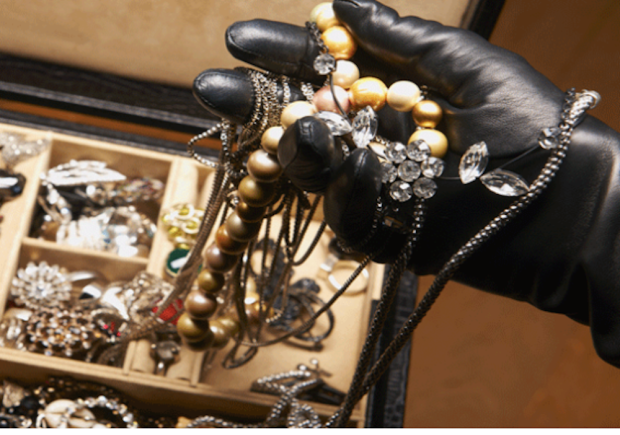The 2018 Bling Ring’s Commerce Challenge

Reboots have officially jumped the shark.
We’re not sure whether the world needed a fifth version of A Star is Born or the 2018 edition of the Furby, but we have them both and early views bode well for both.
It is also true that the problem of repetition is not exactly modern. The phrase “there is no new thing under the sun,” is so old it is attributed to King Solomon in the book of Ecclesiastes. That said, at the point when crime sprees are getting in on the trend, we may have officially reached the point where we can definitively say there is one reboot too many in the world.
We’re talking specifically about The Bling Ring Redux.
The Bling Ring Rides Again
Earlier in the week it was reported that the Los Angeles police department arrested a criminal gang composed of three teenage boys and one of their mothers in connection with a string of high-profile robberies.
According to the LAPD, they were arrested after being pulled over in South LA. The trio allegedly had just robbed the home of Los Angeles Rams receiver Robert Woods. In the car was reportedly $50,000 in cash as well as assorted jewelry, watches and handbags. The mother of one of the teens was also charged in the case, in connection with a firearm also recovered from the car.
At the time, the police did not believe the suspects were involved in anything more than a single robbery.
However.
“During recent months, the Los Angeles Police Department has become aware of residential burglaries targeting actors, producers, musicians, and professional athletes living in the Los Angeles area,” said Lillian L. Carranza, captain of LAPD’s commercial crimes division, during a press conference.
The trio were eventually connected to burglaries at the homes of Rihanna, Los Angeles Dodgers outfielder Yasiel Puig, Christina Milian and her boyfriend, French singer Matthieu “M. Pokora” Tota. Rihanna’s burglary marks her second in recent months — in May a 26-year-old man was charged with burglary and stalking after allegedly breaking into her home and staying there 12 hours. The latest crew seemed much less interested in hanging out — and though there are no reports on what was taken, police have confirmed that damage to the singer’s home was “extensive.”
According to police reports the suspects planned to hit the homes of LeBron James, Viola Davis and Matt Damon next.
They were dubbed by local and national media channels “The Bling Ring” given their love of stealing shiny things — mostly jewelry — from homes of famous people, like the previous holders of the title.
The More Dramatic Original
The original Bling Ring was a group of mostly of young women from upper-middle class California suburbs who between October of 2008 and August of 2009 collectively stole more than $3 million in jewelry and high-end designer goods from people like Paris Hilton, Lindsay Lohan, Rachel Bilson and Megan Fox, among others. All of the suspects were described as “club kids” who were according a Vanity Fair piece “obsessed with celebrity culture.”
The original Bling Ring also had a few more bizarre twists and turns, including an impassioned voicemail from one of its members on what she felt was an unflattering portrayal of her story in the Vanity Fair piece.
“I opened up to you so that way the world could potentially know what a great, amazing, talented, strong, healthy girl that I am, not even a girl, young woman. I am PETRIFIED, petrified with this story! I am so disappointed. And I’m letting you know that I will clear this up. Have a nice life, bye.”
Then there was the ironic twist that this person also ended up sharing a cell with Lindsay Lohan during the month she spent in prison in connection with the robbery spree.
But unlike their more current version, the earlier Bling Ring kept much of what they stole, especially the designer shoes and jewelry. Today’s Bling Ring wants the cash and, according to reports, was interested in selling those stolen goods on eBay.
The Instagram Problem
Social media channels, particularly the photo-based Instagram, are excellent places for celebrities to connect with their fans — and show off their stuff. And this is done for very good commercial reasons — celebrity influencers have a well-established track record of using social media to kick of trends in cosmetics, fashion, jewelry and consumer electronics.
But the downside to social media is that it’s also an excellent information channel for the dishonest. It offers the world a detailed inventory of one’s most valuable possessions, along with an exact schedule of when one will not be home to guard them. The LAPD lieutenant investigating the most recent round of Bling Ring-style thefts noted that the boys in the group had targeted celebrities and professional athletes based on their touring schedules and social-media posts.
The original Bling Ring participants noted the same habits, though slightly adjusted for the time. Instagram wasn’t an option the first time around, but they did use social channels like Twitter and Facebook, combined with Google Maps data, to give them a clear idea of where the people they wanted to rob lived — and when those people would not be at home.
For most consumers, the risk is that the information available online about them can be co-opted by cyber thieves for digital fraud. For the rich, famous and heavily followed online, the threat is that the bolder thieves and fraudsters of the world are collecting that personal information — and making house calls.
Police continue to investigate the Bling Ring Redux in Los Angeles, noting that they believe the scheme is larger than the four participants they have in custody.
The good news? Sort of? According to experts, the same tactics and tendencies that make it easier for potential thieves to smash and grab celebrity goods also make it easier for the authorities to eventually catch up with those thieves. Simply said: showing one’s ill-gotten gains on social media is a common, but not terribly smart, move.
“Criminals may be smart when it comes to operational planning,” Simon Atkinson, a former British Army officer trained in covert operations who now works for the Glasgow-based Athena Security & Intelligence Consultants, told Town and Country. “But the unintelligent ones are often caught because they flaunt what they’ve done: buying expensive cars and posting pictures of them on Facebook. It also makes it easy to find informants.”
The trick is to turn the jewelry into cold cash, but anything from a high-profile robbery is tough to flip quickly on the open market as legitimate buyers will question where the items came from — maybe even using some of those same social media channels to check on items.
Moreover, Atkinson noted, thieves who steal high-profile goods from high-profile people often find they have a problem on their hands. Unless, like the original Bling Ringers, a thief is looking to keep trophies, stolen items have limited use because they are difficult to sell when the authorities are on the lookout for them. Stealing stuff, Atkinson noted, is often much, much easier than selling it.
So even when crime gets a reboot, it generally always ends the same way — in handcuffs.
